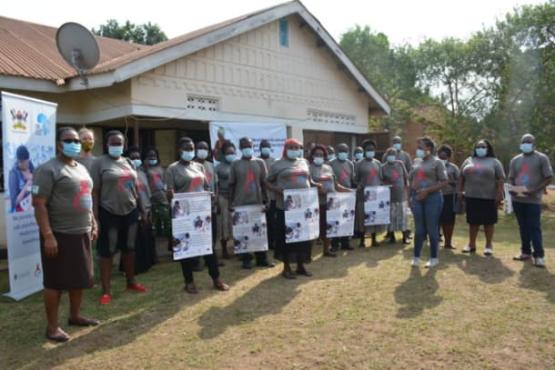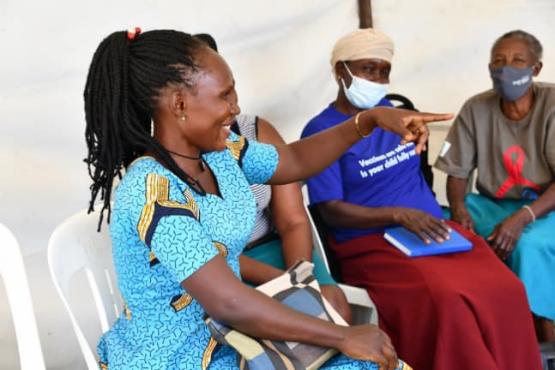Catriona Waitt, Institute of Systems, Molecular and Integrative Biology

Even when the mother requires medication, the benefits of breastfeeding usually outweigh the risks. Our pharmacokinetic work at the Infectious Diseases Institute, Makerere University has demonstrated that when a mother is on antiretroviral therapy for HIV, small amounts of medicine do transfer to the breastfed infant but are not associated with harm. The most important thing a mother living with HIV needs to know is to adhere to her treatment.

At a World Breastfeeding Week event in 2019 (WBW2019), I was encouraged by the Ugandan Minister of Health to engage rural communities as well as the urban population of Kampala. It rapidly became clear that there was need for broader education on early infant nutrition, not just information about medication in breastfeeding.
-555x370.jpg)
We drew together 20 Village Health Team workers from Hoima District (rural Uganda) and following an initial workshop tasked them to obtain community feedback on the engagement materials from WBW2019. From this, it was clear that people wanted written or pictorial material (rather than materials accessed by smartphone or television) so we expanded and redesigned the materials and held a second workshop and round of community feedback. From this second activity, the materials were finalised, translated and the project closed with a third community workshop and training, together with engagement with the District Health Officer, District Educational Officer and with a local press conference.
A particular highlight was seeing how beneficial community empowerment was. A strong example of this was the initial request for the engagement materials to have ‘people who look like us’ in them. We staged some photographs in Kampala to illustrate various scenarios and thought these were good, but the population in Hoima pointed out that the individuals were dressed wrongly, and also that the photograph to depict gender-based violence was in fact not sufficiently violent. We then asked the VHTs to act out the scenarios as they interpreted them. This was eye opening for several reasons – firstly we realised just how powerful drama is in communities with low levels of literacy. It was powerful to see the teams take ownership of the information and present it in a locally relevant manner. Secondly, we were all quite shocked at the violence scenario because it was really very violent – this led on to more discussions about the scale of the problem in rural Ugandan communities.
For more information please see our At The EQUATOR (ATtaining EQUity of Access TO Research) channels:
https://www.youtube.com/@attheequatorug/videos
https://twitter.com/At_The_EQUATOR
Back to: Faculty of Health and Life Sciences